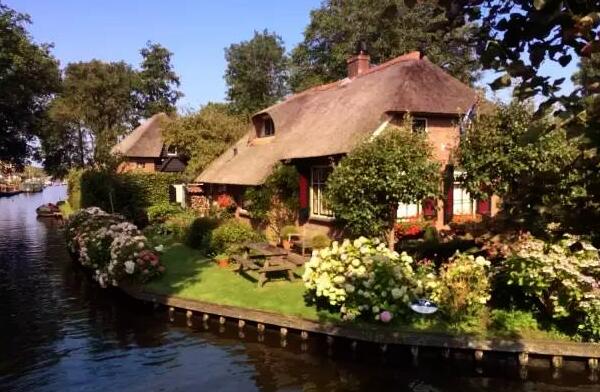Post At 2018-03-19 14:52:37
There is a small village in the Netherlands which does not have roads and cars are prohibited. The usual mode of transportation for the villagers is by boat and they would even rely on the boats to bring them to the church for weddings. Some visitors had compared it to Venice, but this village is far more secluded and tranquil.
This village is Giethoorn, located in the northern part of the Netherlands. It has a history of more than 700 years and remains a scene straight out of a fairy tale. There are no modern means of transport in the village which is served by a canal.
Origin of its name
Giethoorn is known as the "Green Venice" (or the "Dutch Venice"). The name “Giethoorn” was given by a group of coal miners who decided to settle there. Their mining gave rise to the formation of waterways and lakes of different sizes in the village. In addition to coal, the miners had also excavated numerous horns which belonged to wild goats living in the area around 1170. Therefore, they decided to call the village Giethoorn.
Geographic location
Situated in the Dutch province of Overijssel, this picturesque village is located in the municipality of Steenwijkerland, about 5 km southwest of Steenwijk.
Townscape
The best way to experience Giethoorn is to glide down the canal on a flat-bottomed wooden boat, while listening to the history and characteristics of each house being told in detail by the boatman-cum-guide. Apart from admiring the beauty of the scenery, one can also learn about the culture of the village. Renting a chalet and a small wooden boat in the camping area or wandering around the village on a bicycle are also ways to enjoy the nature and the simple pleasures in life.
Most houses have thatched roofs which are extremely durable and can be used for more than 40 years. The thatched roofs keep the houses warm in winter, cool in summer and well-protected from the rain. It is said that in the past, reeds were a substitute for the poor who could not afford bricks and tiles. Today, only the rich can afford to use reeds and its price is several dozen times that of bricks and tiles. The land prices here have already risen so much that most of the residents are mostly high-income professionals such as doctors and lawyers. This seems to be a sharp contrast with the past hardships.
There are many private museums opened by the locals who love to share their private collections with tourists. Visitors should make a stop at the Stone Museum, where one can buy a piece of rough stone and open it with pliers on the spot. If you are lucky, you may just win yourself a piece of high-quality crystal.
